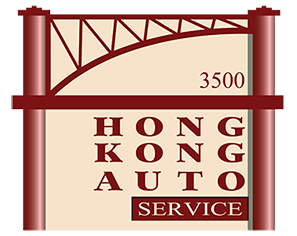College or bust! Fill up on vehicle back-to-school basics
Before you hit the books, pick up your owner’s manual to ensure your car is roadworthy and in tip-top shape for the commute back to school. This manual is your go-to-guide to ensure your wheels get you where you need to go all semester long.
Parents, it’s never too early to school your kids on car care maintenance so the following is good stuff for the new eager high-school driver or college-bound freshman. It’s important you share not only the rules of the road, but how to care forthe car. Teaching good maintenance practices early can lead to lifelong car care skills that will maximize the vehicle’s longevity and keep your young driver and passengers safe.
Students: Hear this! The car’s sound system isn’t your vehicle’s most important feature. While the ability to crank out the tunes is impressive, keeping your car well-maintained will keep you, your passengers and fellow road warriors safe!
Maintenance 101
Your owner’s manual provides an easy road map to keep your vehicle safe. When you need more information, remember that we’re always here to help at Hong Kong Auto Service in Wilmette: “Ask an Expert” at Hong Kong Auto Service. Don’t be afraid to ask questions or take a peek under the hood before you head off for that college adventure or high school football game.
Begin with the basic BTFE plan. Translation: Check the Batteries, Tires, Fluids and pack an Emergency kit before you hit the road.
Battery back-up
Batteries have a life expectancy of three to five years, and they rarely give a warning before they fail. Two early warning signs are corrosion or stains on the battery or clamps. But a more alarming warning sign is that the car has trouble starting or the headlights, radio, wipers stop working suddenly. If that happens, you’ll want to bring the car in for service ASAP or risk getting stranded unexpectedly. If you want to be really proactive, you can ask us to test the battery or you can also replace it before it fails. A battery is vital to keeping your car running. Don’t skimp on this essential car part. If you need a new one, buy it or let Hong Kong technicians replace it for you.
Tired tires
Need more money for gas and new tires? Then check your tires every time you fuel up or travel to college. Underinflated tires affect safety, reduce fuel economy and shorten the life of the tires. Check pressure regularly and you’ll notice the difference in your debit card. Tip: The correct pressure is shown on a sticker in the driver’s side door or glove box and in the owner’s manual—not on the tire.
You also need to check the tire tread to ensure they have enough life in them. If you see any uneven wear, get them checked as soon as possible before your trip. You must have at least 2/32-inch tread on the tires, although 4/32 inch of tread is even better. To check for 2/32, place a penny into several tread grooves across the tire. If part of Lincoln’s head is always covered by the tread, you have more than 2/32-inch of tread depth remaining. To check for 4/32, do the same thing, except use a quarter and see if the tread touches Washington’s head. Don’t forget to check your spare monthly, too!
Learn to change a flat tire because help might not always be available, especially when commuting back and forth to college. Even with roadside assistance, there might be times when you’re too far away or it would take too long for help to arrive. To become a tire-changing pro, practice a couple of times in your driveway until you’re comfortable with the job. If you have a flat tire, turn on your hazard lights and drive safely to a parking lot or rest area. While you might damage your wheel or rim, it’s much safer to make your way to safety than it is to work by the side of the highway.
Fluid fill up
Monitoring your car’s fluid levels is one of the best things you can do to maintain your vehicle. Your owner’s manual outlines the location of each of these fluids, even though most reservoirs are labeled. Make sure the vehicle is parked on a level surface and the engine is cool. (It takes about 8 hours for an engine to completely cool down after a vehicle has been driven.)
Engine oil or transmission fluid are checked with level-indicating dipsticks. Power-steering and brake fluids usually have markings on the reservoir, indicating the correct level. When it comes to wiper fluid, just fill it up to the line and check every time you stop at a gas station.
Use extra caution when checking coolant level. Follow the instructions in your owner’s manual and adhere to the warning labels under the hood. Ideally, you’ll be able to look through the side of the coolant overflow tank and not have to open the tank itself. Never, ever open the radiator cap if the car has been driven within the past several hours. The coolant in the radiator becomes extremely hot when the engine is running, and it can burn you.
While you’re under the hood, always check for signs of loose wires or connections, worn or exposed wires, or loose or warped belts. If anything looks out of place, bring the vehicle in for service sooner rather than later.
Emergency kit
Accidents happen, but are you prepared? Pack an emergency kit so you’re well prepared for almost anything. Some of the basics in this kit include: a flashlight, first-aid kit, warning light, hazard triangle or flares, spare fuses, $20 in small bills and change, jack and lug wrench. Be sure to have your license, insurance and registration. And make sure you have the number of your roadside assistance plan handy.

